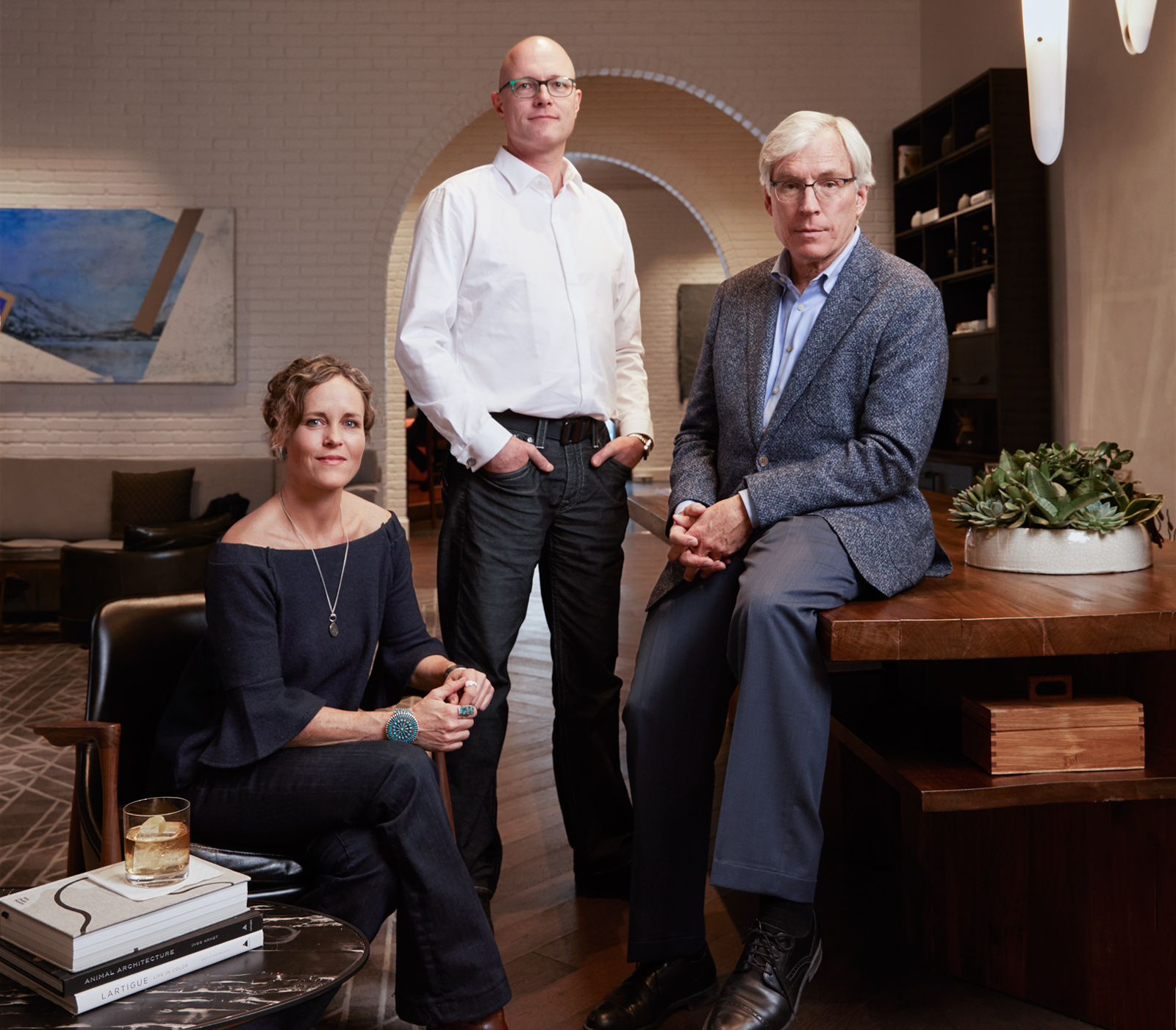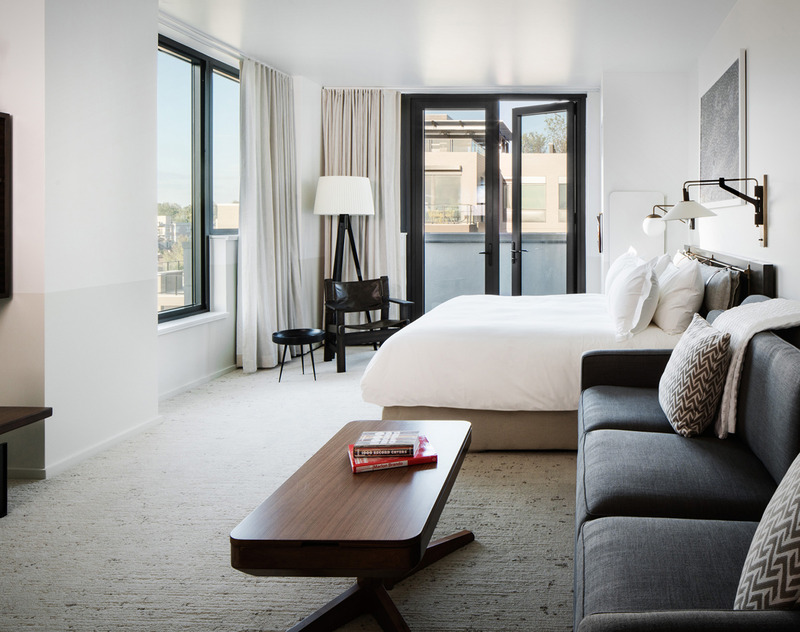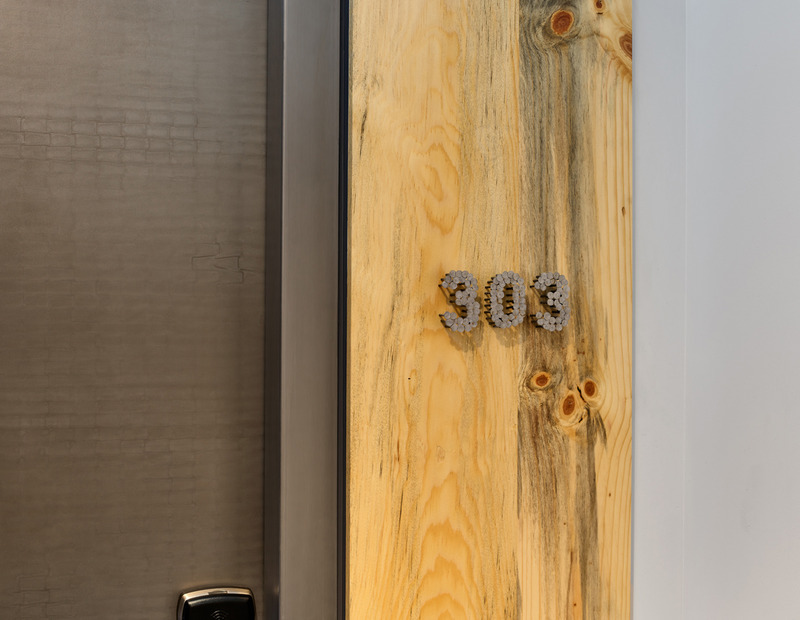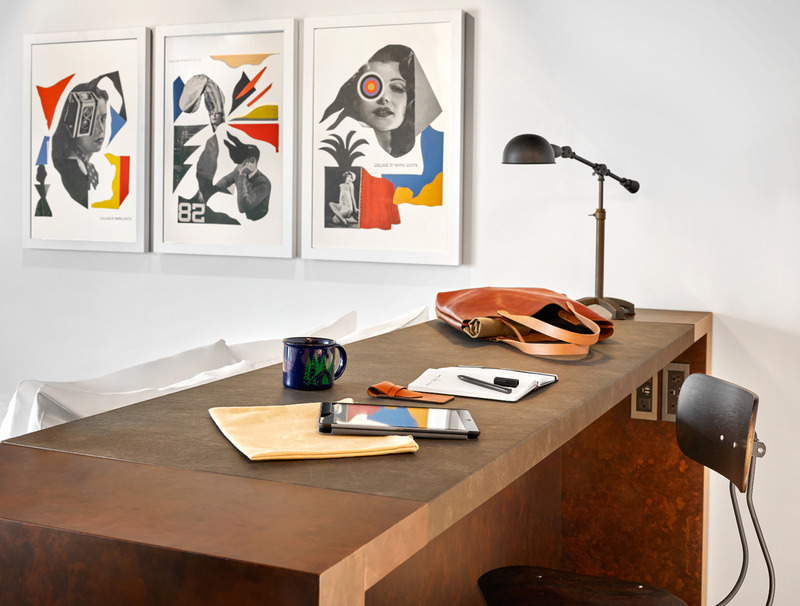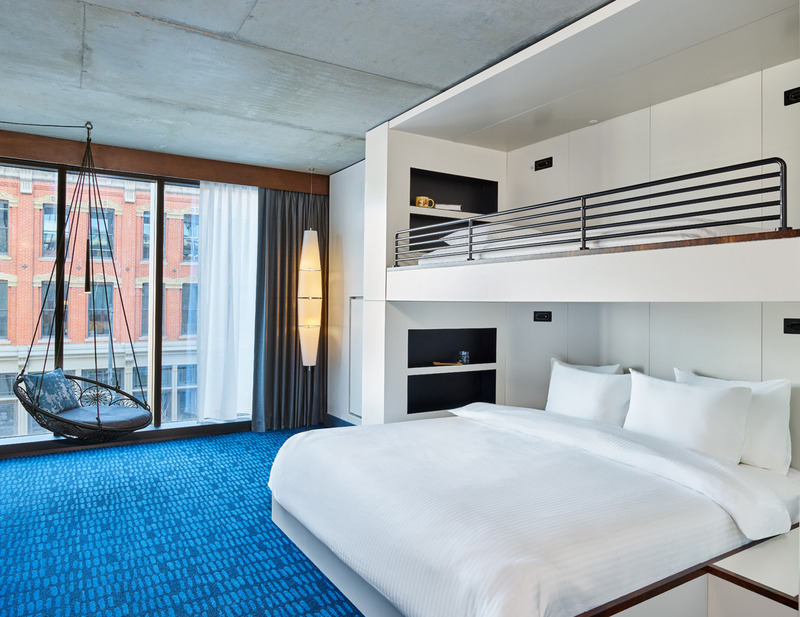The Local newsletter is your free, daily guide to life in Colorado. For locals, by locals.
It would take this entire page to list the notable happenings at New York’s Plaza Hotel, from venerated performances by such icons as Miles Davis and Ethel Merman, to film and book appearances (Sleepless in Seattle, The Great Gatsby), to notable events hosted there (Truman Capote’s Black and White Ball; the 1985 Plaza Accord; and even President Donald Trump’s 1993 wedding). The list’s length alone reveals just how significant a role a hotel can play as a public place. “There’s no lock on the front door of a hotel. They’re open 24/7, 365 days a year,” says James G. Johnson, founding partner at Denver’s Johnson Nathan Strohe (JNS) architecture firm. “They are, in effect, our public buildings.”
That significance as social meeting places is one reason Johnson has been intrigued by hotels over the course of his 41-year architecture career. In fact, he’s designed more than 75 of them around the country—while also running a Denver firm that’s created, or helped re-create, some of Colorado’s most iconic modern buildings. The Crawford Hotel? Yep. Aspen’s St. Regis? Uh-huh. Hotel Monaco, the first Denver hotel to establish a separate identity and entrance for its restaurant (Panzano)? That, too. And JNS is just getting started. As a spate of new hotels, many of them boutique, crop up in the city over the next few years, you’ll find JNS’ fingerprints all over them: The firm, which recently completed the Halcyon in Cherry Creek North (in partnership with architecture firm GKKworks and design firm Avroko), currently has more than a dozen hospitality projects in the works, including the 50-room Ramble in Curtis Park and 233-room Hilton Garden Inn in RiNo; the Moxy in Cherry Creek North; and LoDo’s Maven at Dairy Block, a redevelopment of the historic Windsor Dairy building at the corner of 19th and Wazee streets.

Johnson describes JNS’ design philosophy as “contextual architecture,” which conveys the firm’s ideal of having buildings feel like they’ve evolved from the context of their environs. In Denver’s patchwork of microhoods, that context can change block by block, something JNS architects consider from the outset. “We ask, ‘What makes this site unique in terms of the site or location, and how do we enhance the experience of that context and place in the design?’ ” says JNS partner Nicole Nathan. In the Crawford, that meant paying homage to Union Station’s railway history with “Pullman rooms,” where rich woods and art deco notes evoke the feeling of an upscale sleeping car. Cherry Creek, on the other hand, is a little more cosmopolitan, reflected in the Halcyon: It’s sleek, with contemporary furniture and a black-and-white palette. Similarly, when LoDo’s 172-room Maven debuts later this year, it will recall the neighborhood’s industrial past and the maker tradition implicit therein: The clear-coated steel doors to the rooms remain unfinished, while large panels of beetle-kill pine in the lobby floors and ceiling present a nod to the lumberyard that once existed here. And as part of architects’ growing commitment to creating hotels as public spaces, Dairy Block will include a working Maker’s Alley behind the building where local artisans will sell goods they’ve made on site. (Brooklyn-based Crème/Jun Aizaki Architecture designed the lobby.) A public walkway through the first floor leads to the alley and a stage. “This isn’t stylistic architecture,” Johnson says. “We want it to be authentic so it transcends time.”
The creation of each hotel as its own kind of character doesn’t happen by accident: At the start of each project, architects and designers devote hours to understanding the history of a site and how it functions within its modern context. Is it a dead spot in an active part of the city, like the Maven and Halcyon? Or is it a link between the city and a college campus, as with the Auraria Springhill Suites and Greeley’s upcoming Lincoln Park Hotel, both JNS projects? Once the team lands on a general concept, the storyboarding begins. The team collects and debates words, textures, images, and colors at weekly studios until a final, tightly knit theme emerges. “We want to create a story we can wrap our design around,” Nathan says. And Denver’s modern story is just emerging: As people flock to the city for Colorado’s particular balance of work-life-outdoors, opportunities grow—as does our need for beautiful public spaces. “When you look at the history of great cities and their moments,” says JNS partner Tobias Strohe, “well, I think this may very well be the moment for Denver.”



